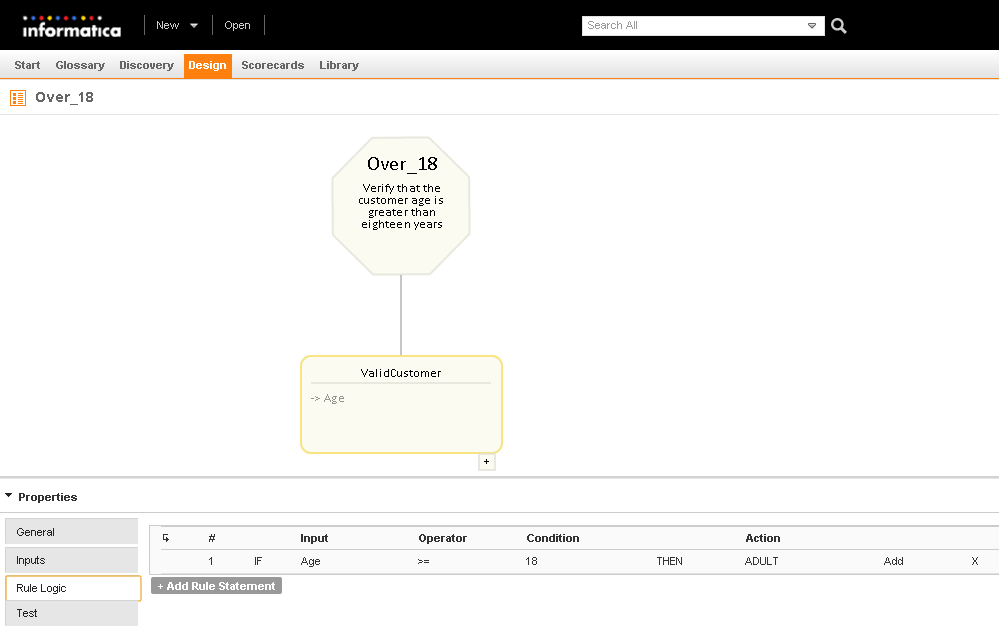

Logical Element | Description |
|---|---|
IF | Begins the IF clause in the rule statement. The IF clause identifies the input data, defines the analysis to perform on the data, and specifies a logical operator to filter the data analysis. You cannot edit the IF element. |
Input | Identifies the data to analyze or update. An input represents a column of business data. |
Operator | Specifies a logical operator to apply to the input data. Select an operator from the following list:
|
Condition | Specifies the data analysis operation to perform on the data. |
THEN | Begins the THEN clause in the rule statement. The THEN clause specifies the output of the rule statement. You cannot edit the THEN element. |
Action | Specifies the output that the rule statement generates if the input data satisfies the logical requirements of the IF clause. If the input data does not satisfy the logic of the IF clause, the rule statement generates no output. |
Add | Adds a rule statement to the rule set. |
Add using result | Adds a rule statement to the rule set and links the two rule statements. The output from the first rule statement becomes the input to the second rule statement. |